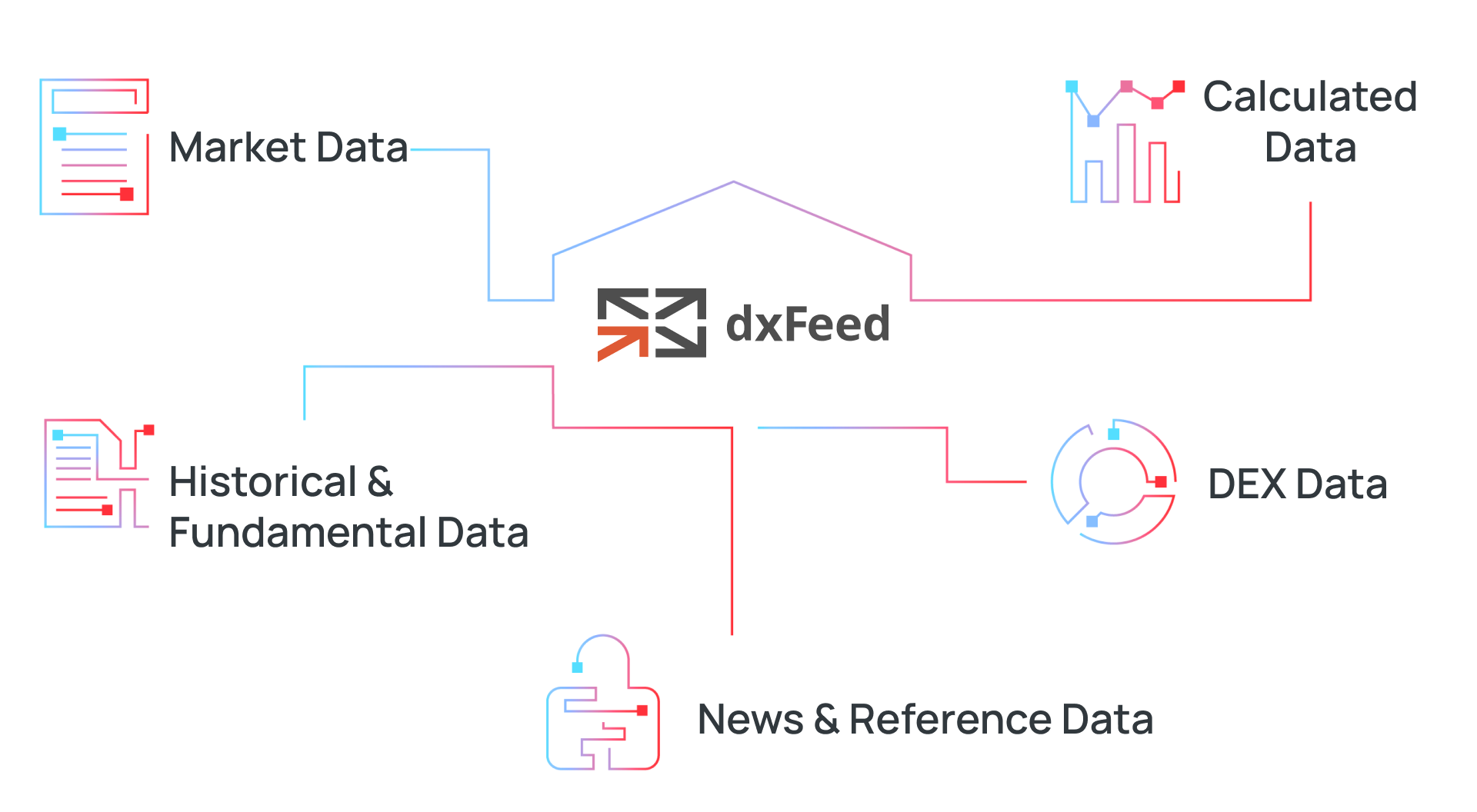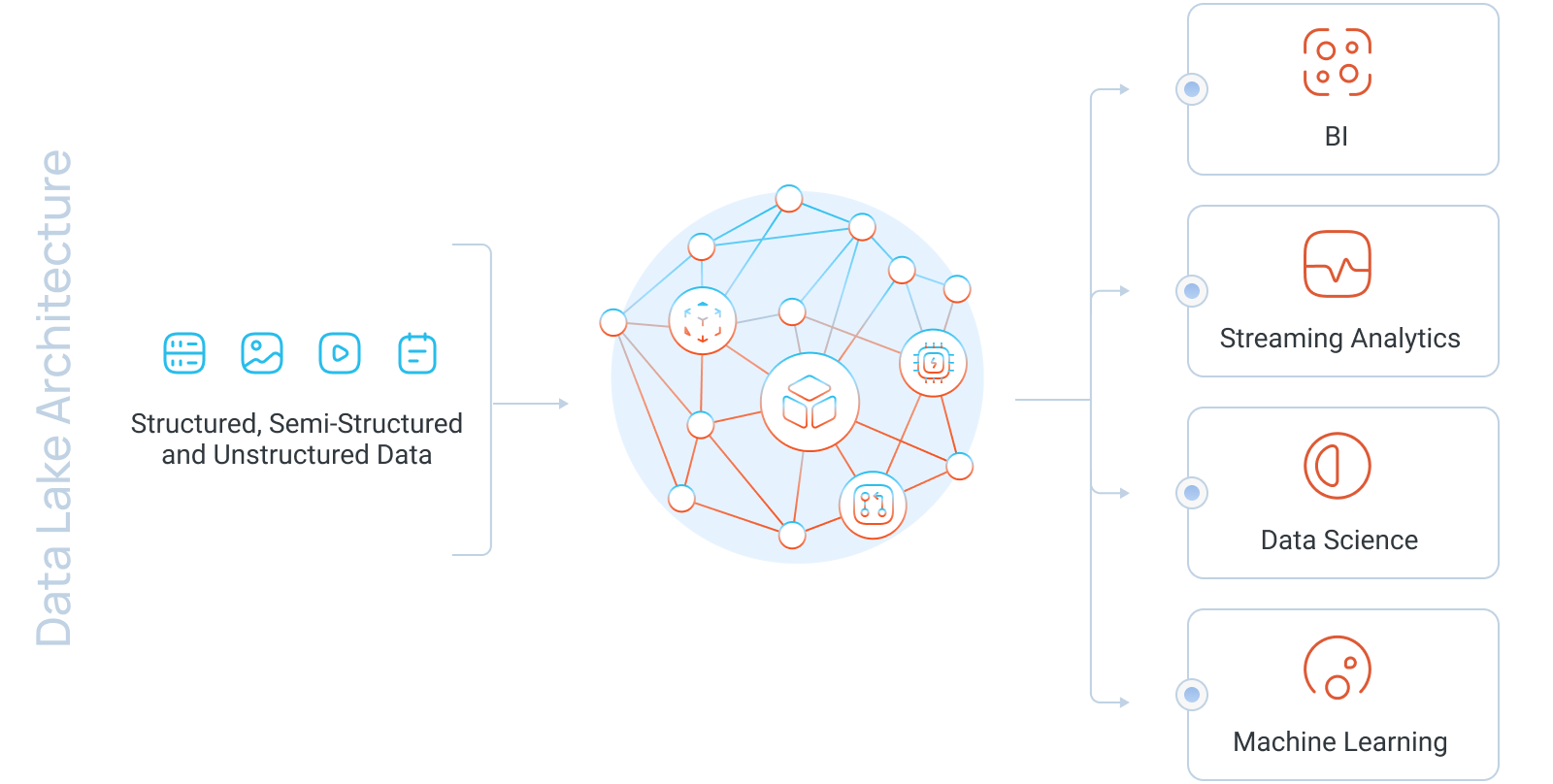dxFeed Historical Data Lake
Overview
In the financial industry, data fuels every decision, making seamless access to historical market data essential for traders, asset managers, and analysts. dxFeed Historical Data Lake (HDL) is a centralized storage repository that enables professionals to access, analyze, and utilize vast volumes of market data with exceptional depth and efficiency.
With its easy integration into modern frameworks, HDL supports tools like Apache Spark, AWS Athena, SnowFlake, and MLFlow. This facilitates effortless data analysis, querying, and machine learning, empowering financial professionals to optimize their data-driven strategies.
Built for Experts in Finance and Trading
Quantitative Traders & AI Teams
Run complex backtests and ML models on raw, granular data.
Asset Managers & Hedge Funds
Enhance your portfolio strategies using deep, data-driven historical insights.
Exchanges & Market Makers
Ensure compliance, market surveillance & accurate pricing.
Financial
Researchers & Institutions
Leverage high-quality financial datasets for advanced analytics.
Trading Platforms & Backtesting Systems
Power algorithmic trading and scenario testing with seamless API-based data access.
Key Benefits
Decades of Historical Data
Tick-by-tick precision across multiple asset classes.
10+ Petabytes of Archived Data
Unlimited capacity and scalability for mls time-stamped tick data storage.
High-Performance Data Retrieval
SQL-based access delivering nearly instantaneous results.
Cloud-Based Querying & Analysis
On-demand remote access to vast datasets without the need for downloads.
Scalable & Cost-Effective
Processing high-volume/huge datasets at reduced infrastructure costs.
Amazon Data Exchange Integration
Seamless access to historical financial data.
API-Driven Integration
Power trading platforms, research tools, and analytical systems.
Cloud-Agnostic
Seamless operation across major cloud platforms (GCP, Azure, OCI).
Advanced Features
Machine Learning & AI Integration
Smart Indexing & Anomaly Detection
Custom API & Streaming Options
Tailored Data Lake Solution
Available data
Data Access
dxFeed HDL offers cloud-based analysis of historical market data, eliminating massive downloads and heavy client computing.
dxFeed HDL provides flexible data access via APIs, big data tools, and AWS solutions.
Flexible APIs
REST extraction; Main Outbound API with dxFeed and ad-hoc queries (JDBC, AWS CLI, REST).
Seamless DW Integration
Quantitative research toolkit seamlessly integrated with Apache Spark for scalable and efficient data analysis.
AWS-Driven Solutions
Athena for fast SQL; ADX for retail data, boosting accessibility and usability.
Big Data Analysis with Spark
Works with dbt, RedShift, Snowflake, Databricks, and DuckDB.
AI & Machine Learning-Optimized Access
SageMaker, PyTorch, TensorFlow, and MLflow drive predictive analytics.
SaaS
dxFeed HDL is not only a historical data provider but also a powerful technology platform. It enables companies to build their own data lakes, integrating historical market data seamlessly into custom applications, trading platforms, and research tools.
If your business requires a fully customized historical data infrastructure, HDL’s architecture can be tailored to your specific use case—whether for internal analytics, trading simulations, or AI-driven financial modeling.

